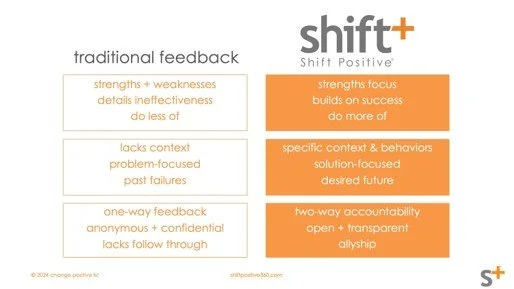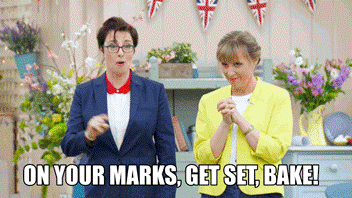Leadership Enthusiast turned 4 this month! This one snuck up on me. Time has a funny way of doing that, doesn’t it? One minute you are nervously launching a new business and the next you are sitting at your desk realizing FOUR WHOLE YEARS have flown by. I’m feeling all the feels – gratitude, pride, and a big dose of reflectiveness.
Many of you might already know that one of my greatest loves is 80’s movies. So it might not surprise you that as I reflected on these last four years, the great philosopher, Ferris Bueller, immediately popped into my head. “Life moves pretty fast. If you don’t stop and look around once in a while, you could miss it.” That really hits home today, so I took Ferris’ advice. I stopped and looked around.
I thought about the teams I have worked with. The leaders I have coached. All of the training workshops I have facilitated. I smiled and let out a big, contented sigh. What have I learned? What patterns have I noticed that might be useful for others? What feels worth sharing as a way to memorialize this four-year milestone? I chuckled to myself as the criteria for such a list became instantly clear: whatever I share needs to be timeless, relevant, universal, and poignant – just like the themes found in every great John Hughes film. He is one of the GOATs for a reason!
Thinking about all my teaching and coaching experiences, one single theme kept coming up. It falls into my “evergreen leadership challenge” category because it’s always persistent and never seems to dull in color despite the season. This particular evergreen challenge reminds me of the ocean currents at my favorite local beach – unseen but incredibly strong. Their impact and force run underneath nearly every leadership or team struggle, quickly taking leaders and team members off course before they even realize it. Chronic pain is also a feature of this phenomenon. The pain of misalignment, mistrust, miscommunication. A most unfortunate trio of “misses”.
Picture me climbing on a great big soapbox about now with a loud microphone because this evergreen challenge is near and dear to my heart. We are about to make those pesky unseen currents more visible. You ready? This might be the single greatest tool in your leadership toolbox…
Just Because You Think It, Doesn't Make It True
Or put another way, don’t treat assumptions as facts.
Most of us tend to make assumptions in two ways. First, assumptions about ourselves, hello inner critic! And second, assumptions about what others are thinking and feeling. What is endlessly fascinating to me is how quickly we do this. It takes almost no energy. You can thank our beautiful brains and their craving for certainty. We’ll create stories about why people are doing certain things and never bother to ask them because we already have a “complete “picture. Those stories become facts, and those facts guide our behavior and decisions. Outside of that trio of unfortunate misses (hey, maybe a good name for a band?), it is a recipe for limited options, poor decisions, and avoidable misery.
Assumption Type #1: Stories We Tell About Others
Let’s bring John Hughes back to this conversation. He was a brilliant storyteller, especially around the impact our stories about others have on people. The Breakfast Club is a perfect example. We see each character reveal and explore the untested assumptions they accepted about each other: the Brain, the Basketcase, the Jock, the Princess, and the Criminal. Those labels – assumptions about who they were – limited their ability to connect until they started to question them. How often do we do a version of this at work?
"My boss didn't respond to my email, so she must be unhappy with my work."
"He didn't contribute in the meeting, so he must not care about this project."
"The team is resisting because they're lazy or don't understand the vision."
What’s worse is that these assumptions about others can be quite dangerous because they often trigger defensive behavior from us. None of us show up as the type of leader we want to be when playing defense.
Assumption Type #2: The Stories We Tell Ourselves
"Nothing can harm you as much as your own thoughts unguarded." -Buddha
Sometimes the most relentless storyteller is that inner critic that lives rent-free in our heads. A voice that is constantly making assumptions about our worth, our capabilities, and how we "should" be.
Ah, that dreaded word…"should". Perhaps the most dangerous word in a leader's vocabulary. "I should be more decisive." "I should have known better." "I shouldn't need help with this." I suspect many of us might be able to fill pages with our “shoulds”. I often joke that when we do this we are essentially "should-ing” all over ourselves, and you don’t need me to tell you what a mess that makes!
The inner critic is particularly sneaky because it speaks with such authority. It doesn't present its judgments as possibilities to be examined – it delivers them as absolute truths. "You're not strategic enough." "People don't respect you." "You're going to fail." And we believe it!
The Assumption Antidote: Always Be Validating
So, what is the solution to these assumption traps? Years ago, I was lucky to work with an amazing artist and human, Sam Didier. Sammy would always say, ABC – Always Be Creating! I loved that phrase, and it inspired a simple mantra that I use with my clients today: ABV – Always Be Validating.
ABV means taking a pause and stepping outside our own narratives to check if what we are assuming is actually true. Here's what it looks like:
Pause – Catch yourself in the act. Notice when you're treating an assumption as fact. This awareness alone is powerful. Pay attention to phrases in your mind like "obviously," "clearly," or "should" – these are often red flags for unvalidated assumptions.
Get curious – Instead of acting on your assumption, get curious about it. Ask yourself: "What evidence do I actually have for this belief? How do I know that this is explicitly true?” This is especially helpful when testing the stories we tell ourselves.
Ask! –There is never enough dialogue when it comes to testing or validating assumptions. Simple questions like "I noticed you seemed quiet in the meeting – I'm curious about your thoughts on the project" can prevent a world of misunderstanding. Asking is also particularly helpful to validate assumptions around language or words used. For example, one of your employees says that they had a “challenging meeting” yesterday. Instead of using your own definition of “challenging”, this is the place to pause, get curious, and ask. Something like: “Hey, you used the word ‘challenging’ earlier when talking about yesterday’s meeting. How are you defining that word in this case?” Boom! Now you are dealing with facts.
Enlist allies – Share your thinking with trusted colleagues who can help you test those assumptions (about yourself or others) you might be making.
The ABV Payoff
The impact of shifting from assumptions to validation is profound. I've seen teams transform their effectiveness when they start testing assumptions rather than acting on them. Communication becomes clearer. Trust deepens. Innovation flourishes because people aren't constrained by false limitations. One specific example come to mind…
A leadership team I am currently working with recently added “test assumptions” as a critical part of their ground rules when working together. They are testing assumptions about words and language or about what that raised eyebrow meant during this morning’s stand-up. The amount of time and energy it is starting to save them is remarkable – problems get solved faster, relationships are strengthening, and best of all, they are minimizing those painful cycles of miscommunication. Swoosh! Score another point for ABV!
As I look ahead to year five of Leadership Enthusiast, I'm carrying this lesson with me – assumptions checked, curiosity engaged, and validation always in progress. To my current clients, thank you for the privilege of supporting your growth. To those I haven't yet met, I'd love to explore how ABV might help transform your leadership journey.
And what about you, dear leader? Time for your own strategic pause and reflection. Where might you benefit from questioning an assumption that's been guiding your actions? What might be possible if you applied a little ABV to your leadership practice?




















